My name, is Markus Hofstätter, I am a collodion wet plate artist from Austria with my main focus on portraits.I shoot digital too, but the last two years my main business went to wet plate workshops, wet plate events and portraits. I won some awards (World Photographic cup nation award for example) and had a title page on the international Silvergrain Classics magazine with a wet plate.
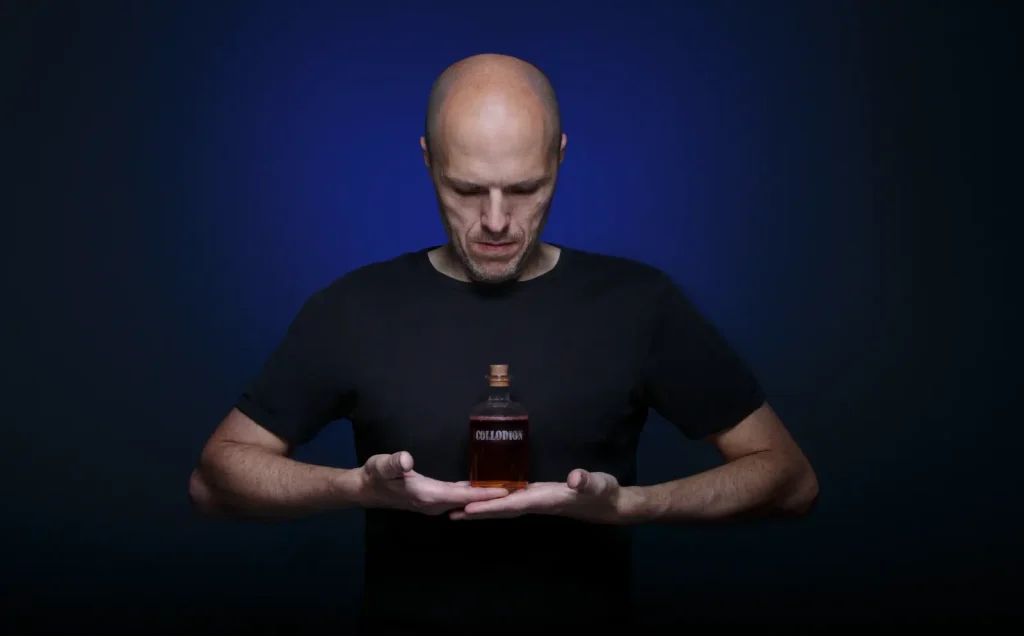
Why Infrared?
Before wet plate, I started with analog photography (35mm, medium format and large format). Even back then, I looked out for cameras that can shoot infrared film without an issue (I know anyway, todays film is not really infrared anymore) That means I had already some rolls of Ilford SFX200 and Rollei Infrared 120 in my film-freezer. But never gave myself the chance to shoot it.
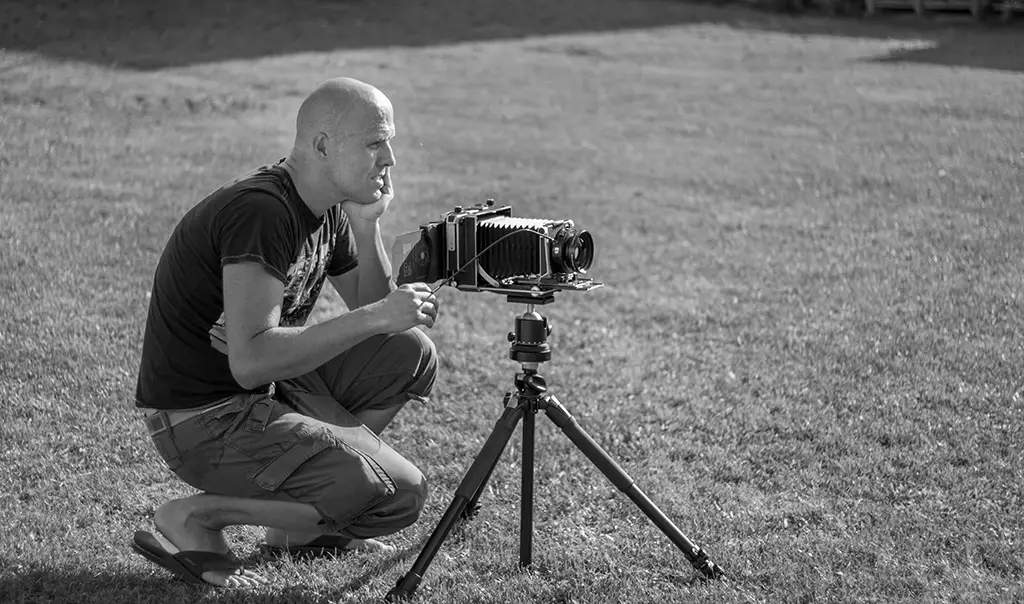
At some point the Austrian Professional Photography association invited us to a infrared photography competition for the La Gacilly in Baden (The La Gacilly is one of the biggest Photography exhibitions in Europe – I think even it is the biggest – 7 Kilometres long and free). As soon as I saw this invitation I was like “Yess – finally I have a reason to do it“. One of my wet plates were exhibited at this exhibition before, so I was excited to contribute another image. Even if it wouldn’t have been selected, it would be the journey to that, what I enjoy a lot. Often this takes a long time.
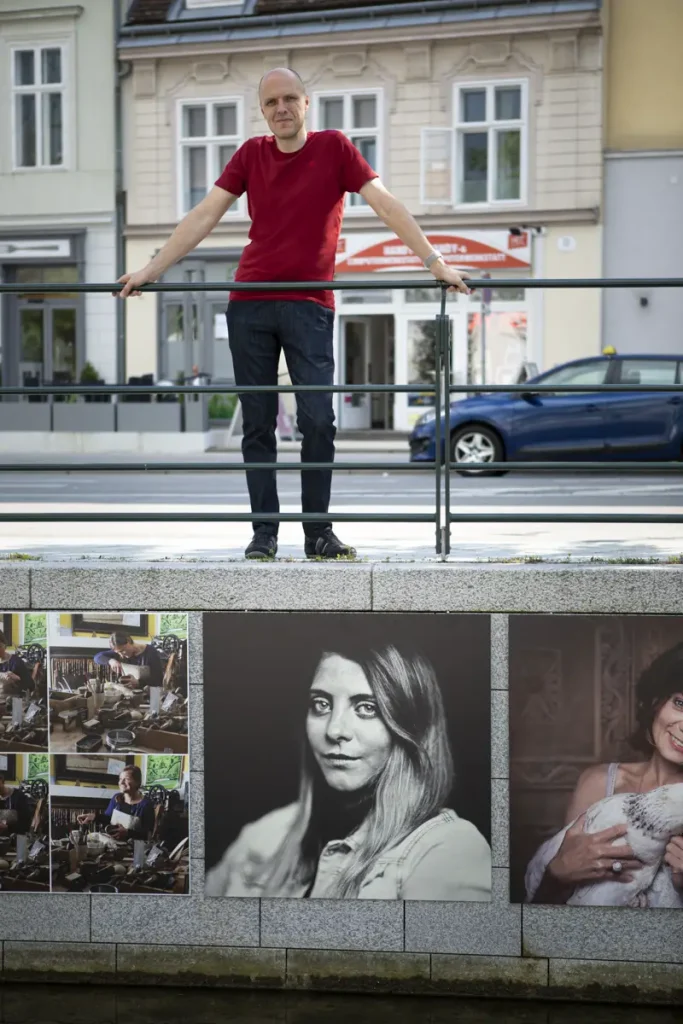
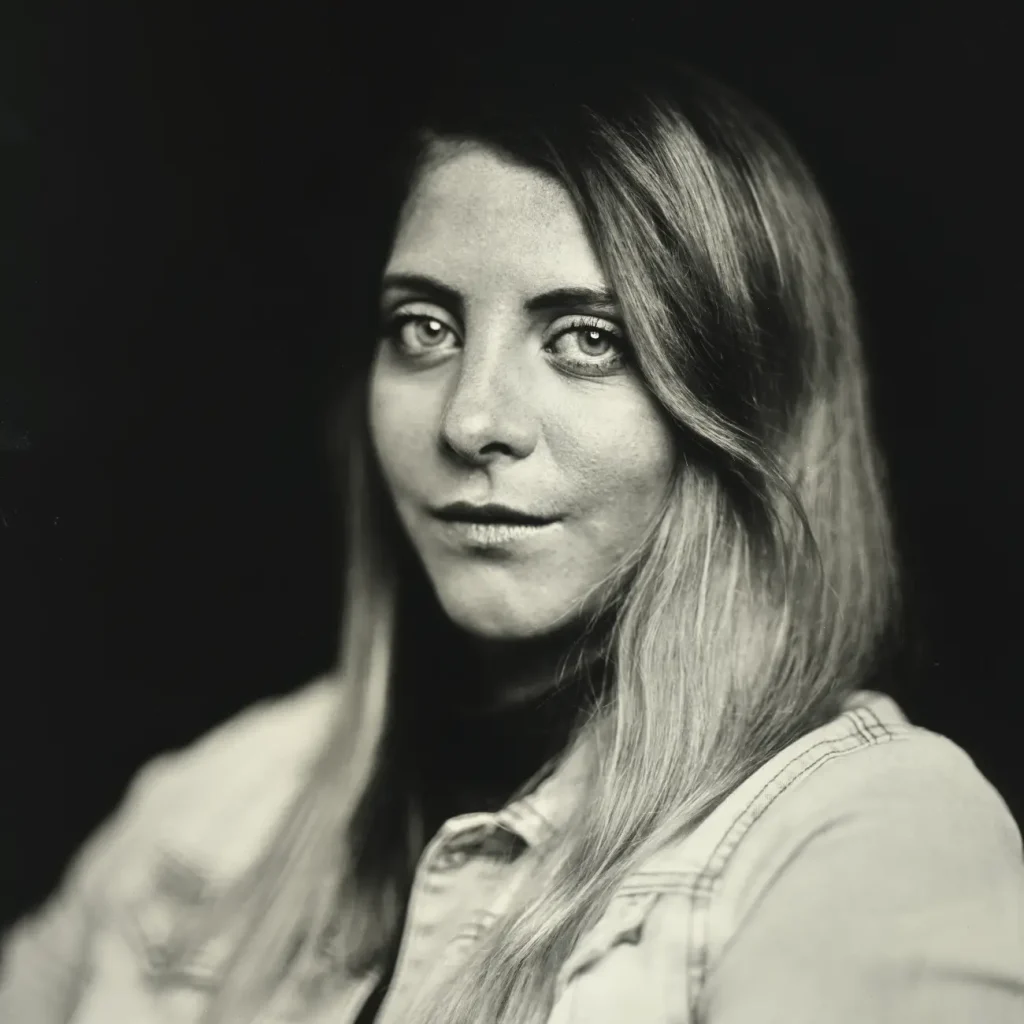
The Plan
The information about this competition was released long before the pandemic, so my gears were already turning and I tried to figure out how to create a meaningful artwork.
Politics wise, the refugees were a big topic for the right parties. I saw how some politicians around the world tried to divide us with this topic. So I thought I could show this division with the combination of wet plate process (capturing only blue light) and Infrared Photography (capturing only red light). Looking for the right model was my first journey, but I got lucky with Bernhard. During the first call I felt that he is the right person, super friendly and excited to be a part of this. Also his tattoos fitted perfectly in. So we tried to find a date for the shooting, but then there was the lockdown and we couldn’t do anything.
The Lockdown – time for infrared
Not able to shoot this portrait, I did many corona wet plate project and founded the United Art Gallery (if you have covid 19 or equal rights related work, feel free to submit it). The positive thing on that was, that I had more time and started to play with infrared film. I also got myself a Sony DSC F-808. This camera can shoot infrared without any modifications. You just need a magnet, that pulls away the internal ir filter.
Additionally a friend borrowed my a modified Pentax K20 DSLR. Yay – new toys to play! I shot a lot of film and digital to learn more how it reacts to certain situations. I learned to see infrared, so to say. I have the same sight when I shoot a collodion wet plate portrait.
While testing the analog film, I liked the Rollei better. I did some half body shots of myself and the Rollei showed my veins a bit more than the Ilford. To be honest, when shooting landscapes, there is not really a difference. As you can imagine, I shot many photographs that time. At some point, because of the pandemic, it was also difficult to bring the film to my lab. Yes I could have developed them at home, but I haven’t done that for some time and my chemicals were pretty old too. So I shot mostly digital.
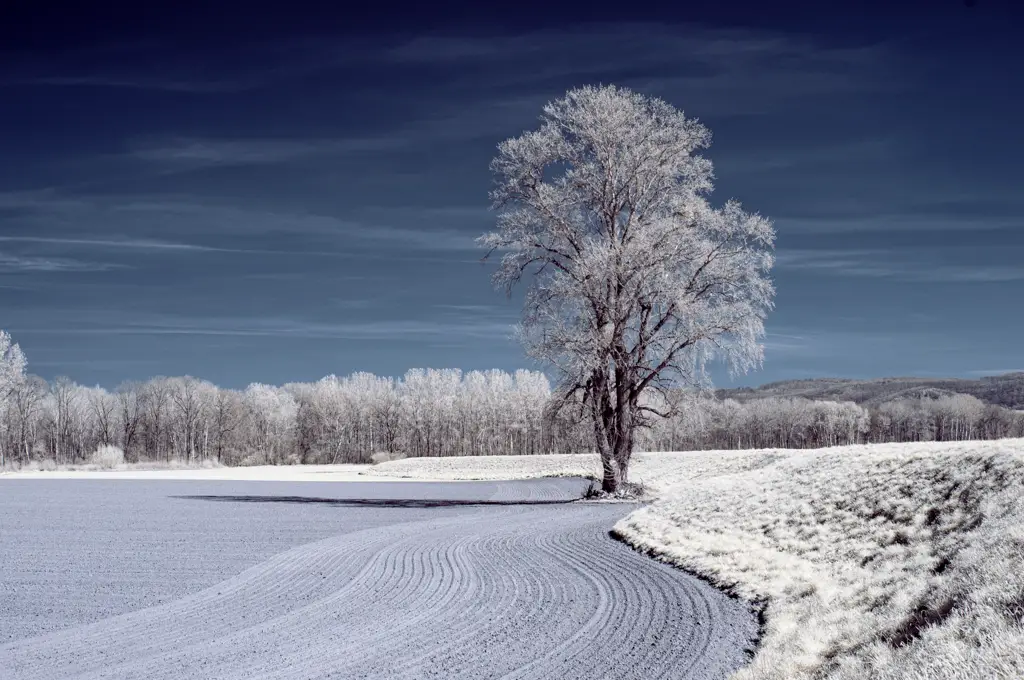
Deadline
The deadline for the exhibition came closer and closer and we still were not allowed to shoot portraits in our studio. Then there was a glimpse of a chance that we could, so I made another appointment with Bernhard. But on the same day our chancellor postponed everything again (very understandable and a good move)
Anyway, I was disappointed, that I couldn’t deliver the portrait on time. Even if I was disappointed and a bit upset, I wouldn’t take the chance to put anybody into a risk. I had already lots of landscape images ready but I was missing my favourite genre – a portrait. So I tried to figure out how to do a portrait with infrared photography that has a deeper meaning.
We were already allowed to shoot outside and my girlfriend agreed to model for me this time. So we created together this image called “Time Mirror“ that shows the time we live in (with the mask) compared to the time we had before (reflection without the mask). Then I sent in this image and two landscapes I really liked a lot.
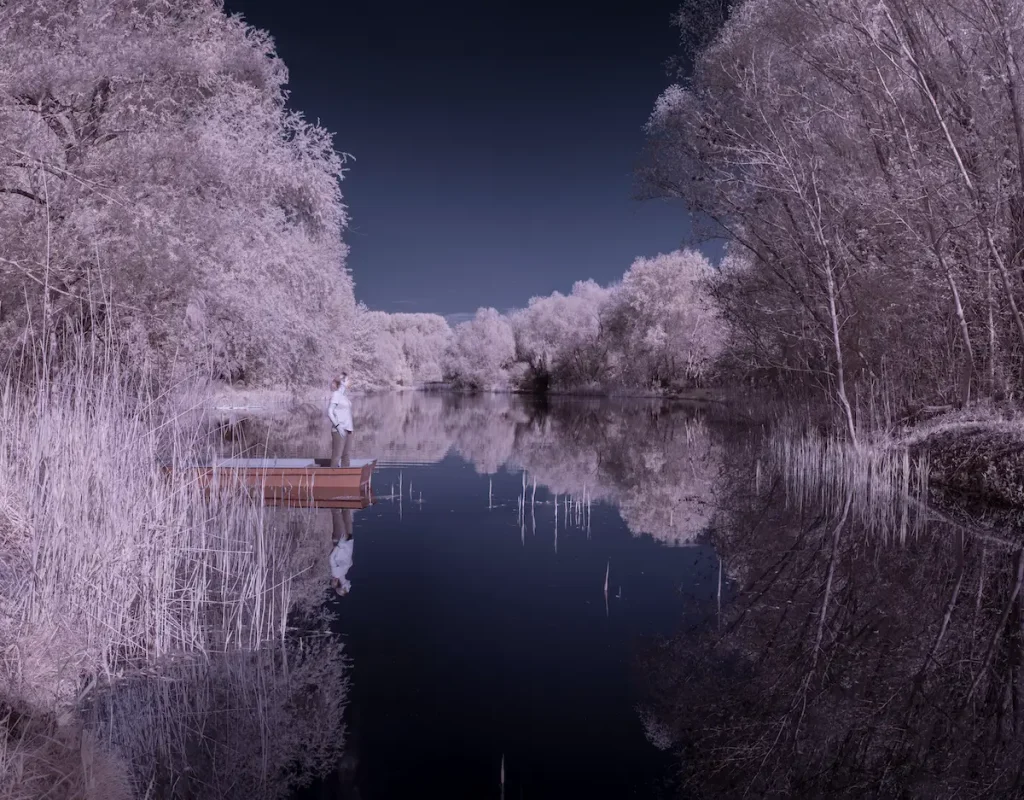

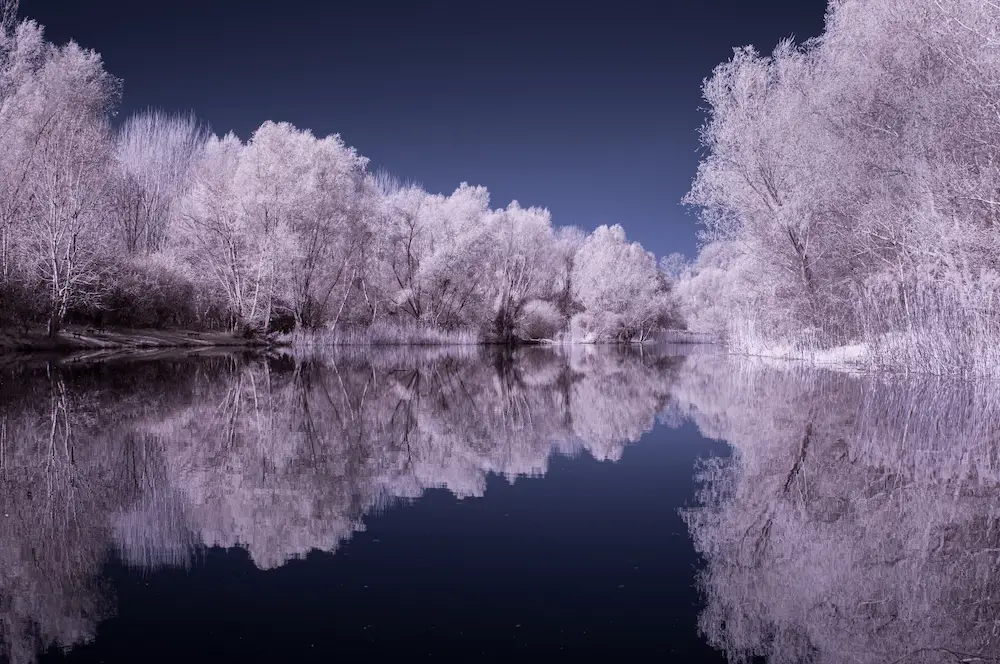
As you can imagine, I was very excited to see, that two of my three images were selected for this exhibition. And finally I found here the right time to show the non released “Time Mirror“ for the first time.
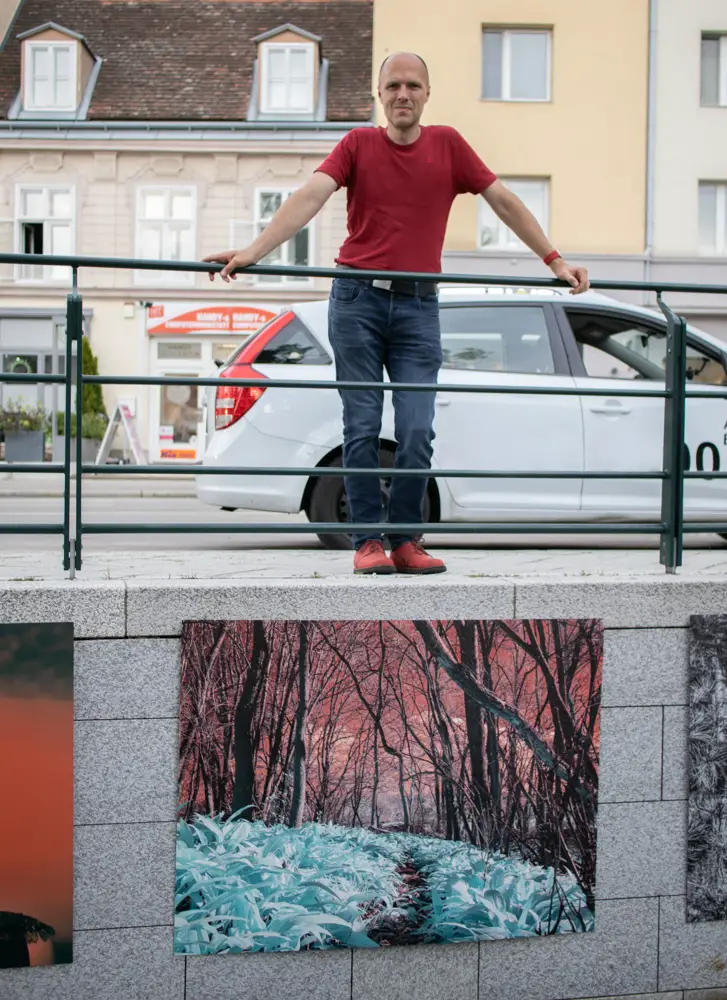
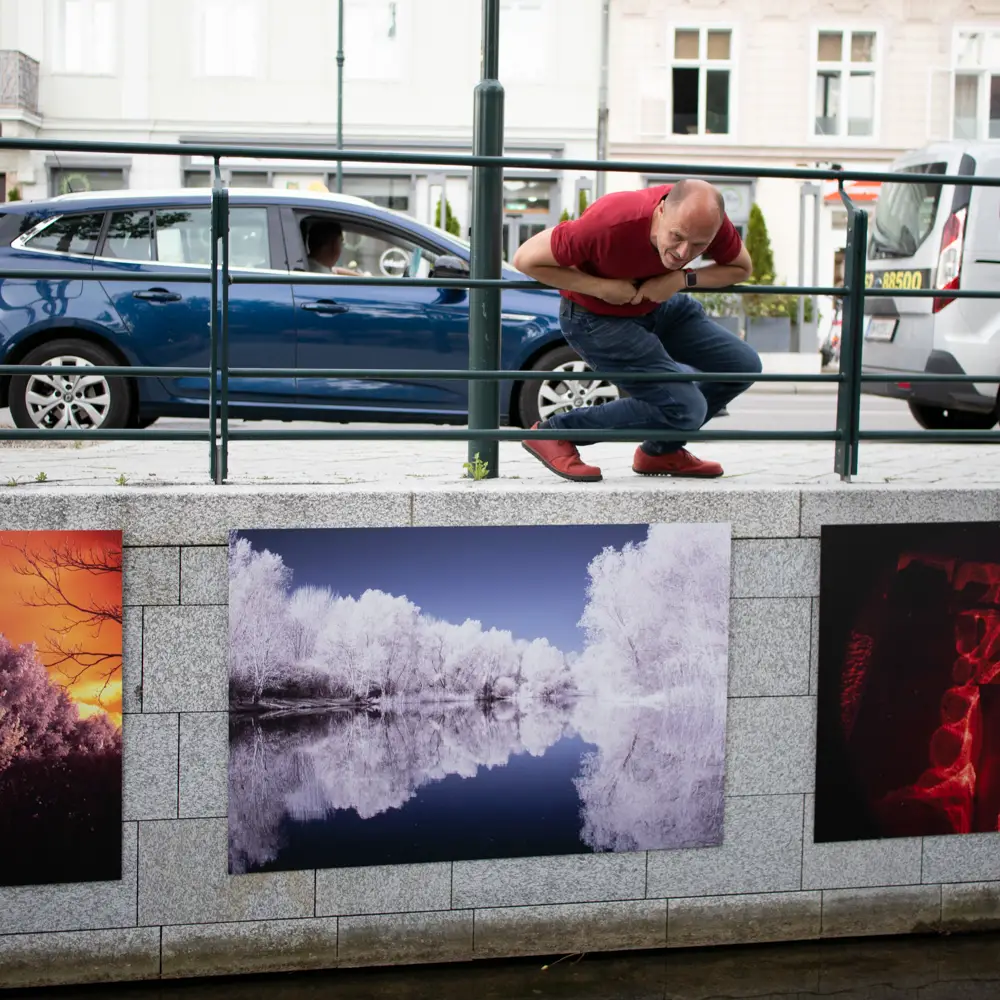
Maybe an interesting side note, one of the landscape photographs shown in this big exhibition was shot with the 8 megapixel Sony dsc F808 and printed at a size of 1+ meter. You can refer to that if somebody tells you how important Megapixel are…
Division – a portrait shot with non visible light
As said the journey is what I enjoy a lot – so after we were finally allowed to have customers and models back in our studios, I finally could do my “Division“ portrait. The refugee topic was my first idea, but after the pandemic I though it fits for both topics. Because even in the pandemic we have people who think of a conspiracy and people who know it’s a virus.
On the left side the blindfold is blocking the sight – people can not see clearly, the faded tattoos stand for a faded reality and the fist shows anger and caginess On the right side you see eyes that see through the blindfold, high contrast tattoos and an open hand that is ready to help and hug.
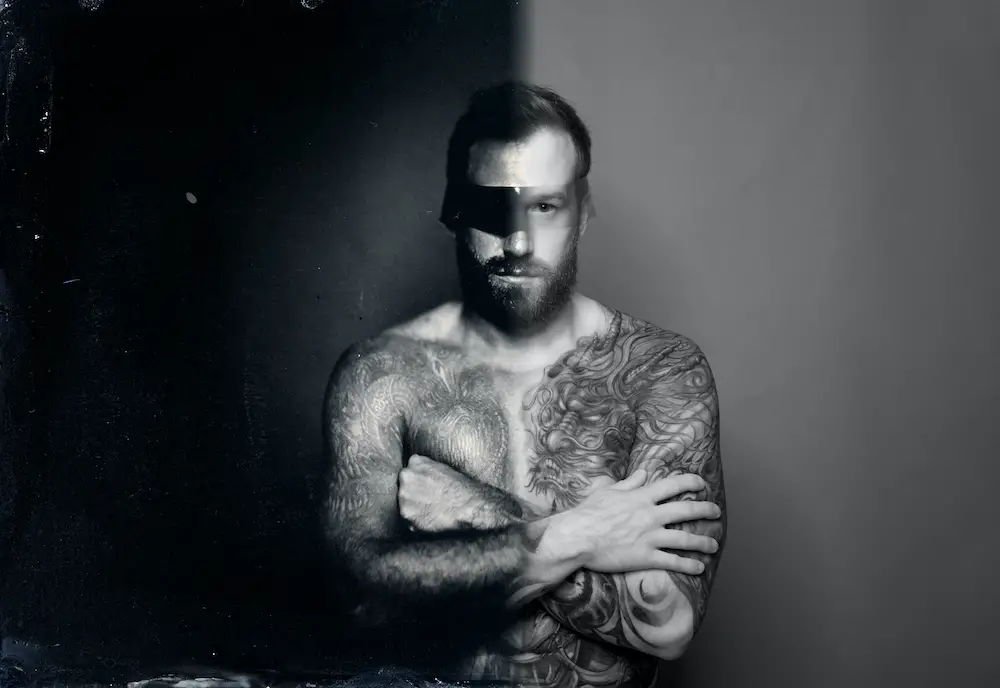
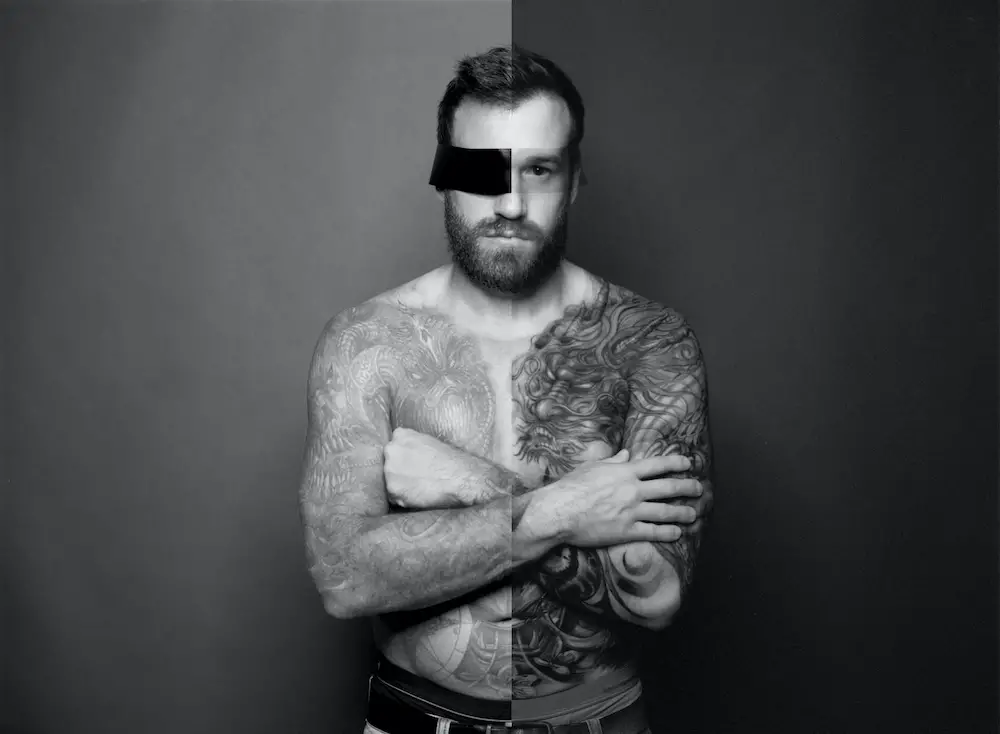
I made also a bts video from this shooting:
I shot this series on 5 different mediums:
- Century large format camera with my Dallmeyr 2b lens (220 mm f3)
- Mamiya afd 2 with a 80mm 2.8 lens and the Rollei Ortho 25 with a blue filter
- Mamiya afd 2 with a 80mm 2.8 lens and the Rollei infrared 400 with a red filter
- Canon 5D mk IV with a 50mm 1.2 lens
- Pentax k-20 modified for infrared photography
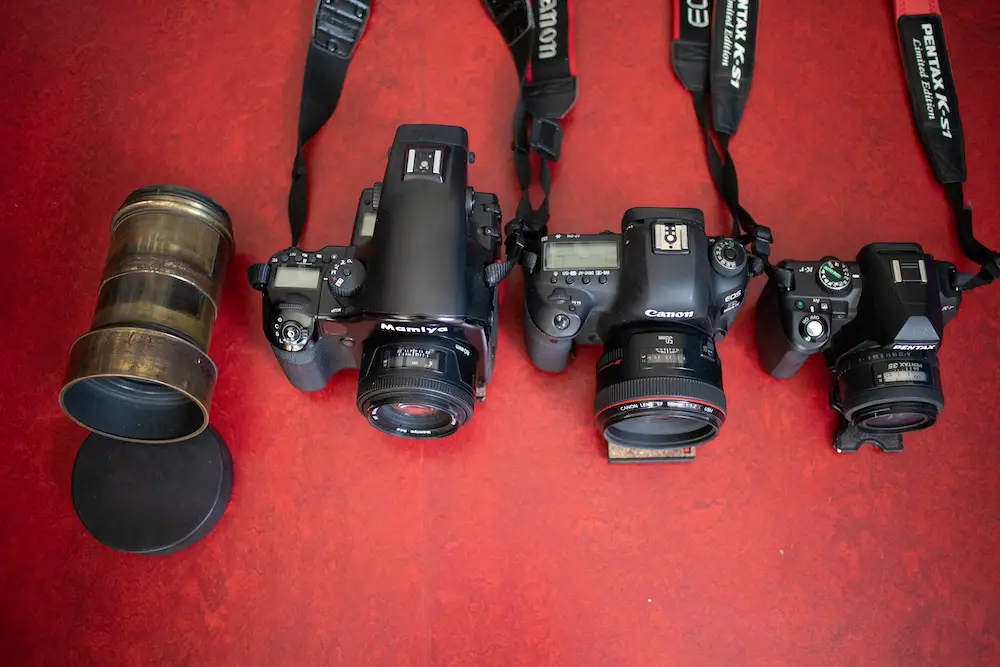
I have also a Hensel Tria 6000 generator, but the Tria 3000 had enough power to proper expose my 13×18 cm wet plate and I also could stop it down for film and digital (from wet plate ISO 0.5 to ISO 100 on digital are about 7 stops of difference) The Tria 6000 would have been too powerful for that.
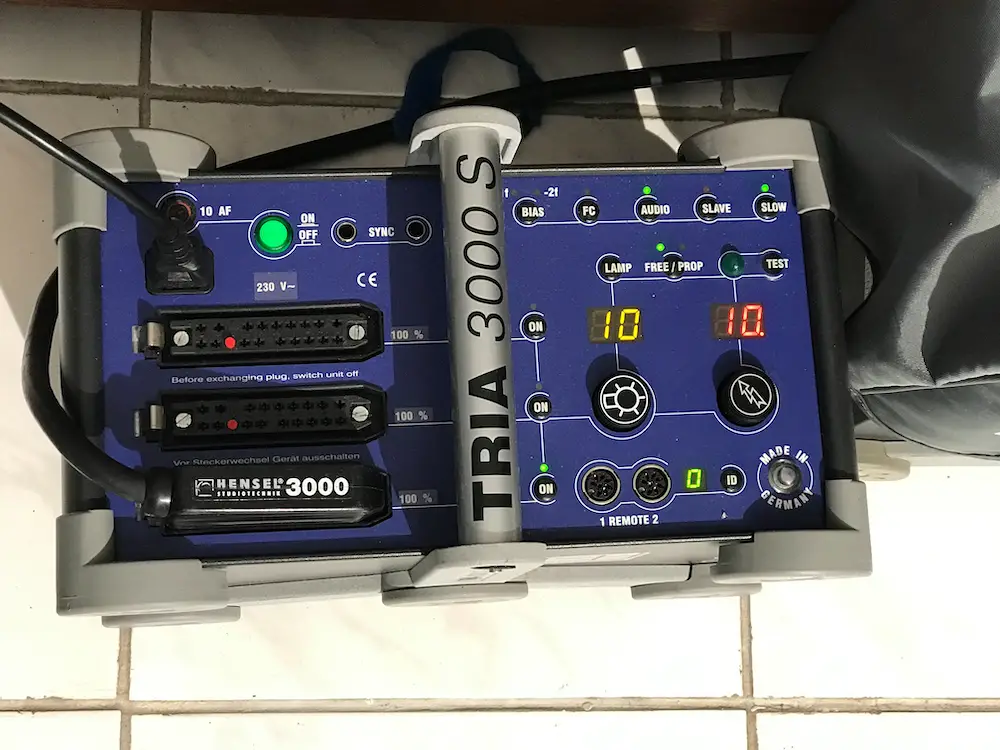
As you can see, all lenses have an equal focal length of 50mm. 35mm on crop are 50mm on full frame, 80mm on medium format are about 50mm on full frame and the Dallmeyr 220mm matched also 50 mm when shot in 13x18cm plates. Check also the red lines on the focus scale of the lenses. These are marking how to correct the the focus for infrared.
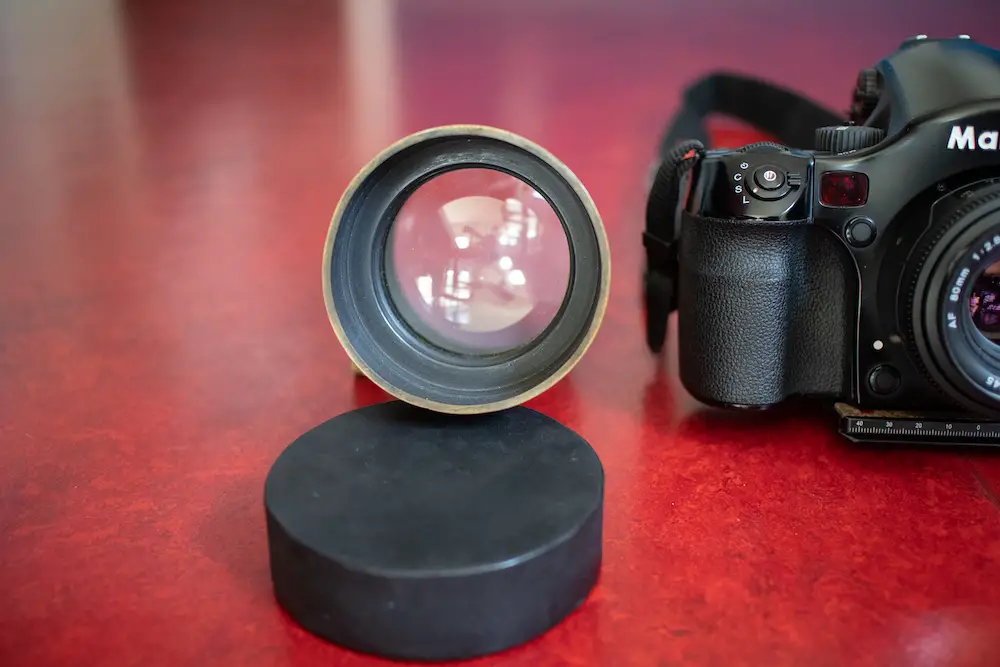
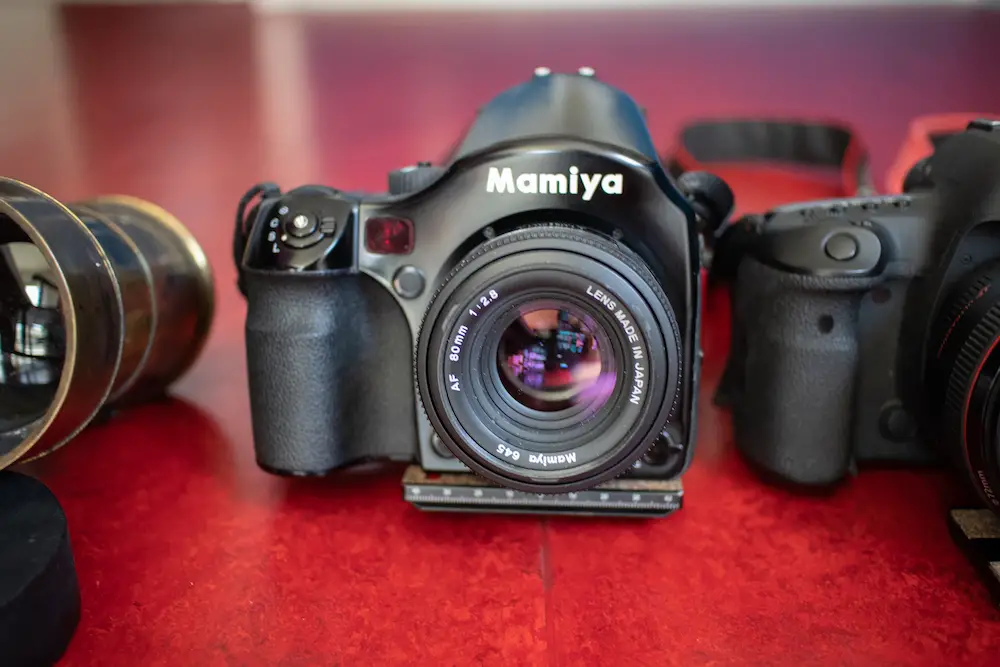
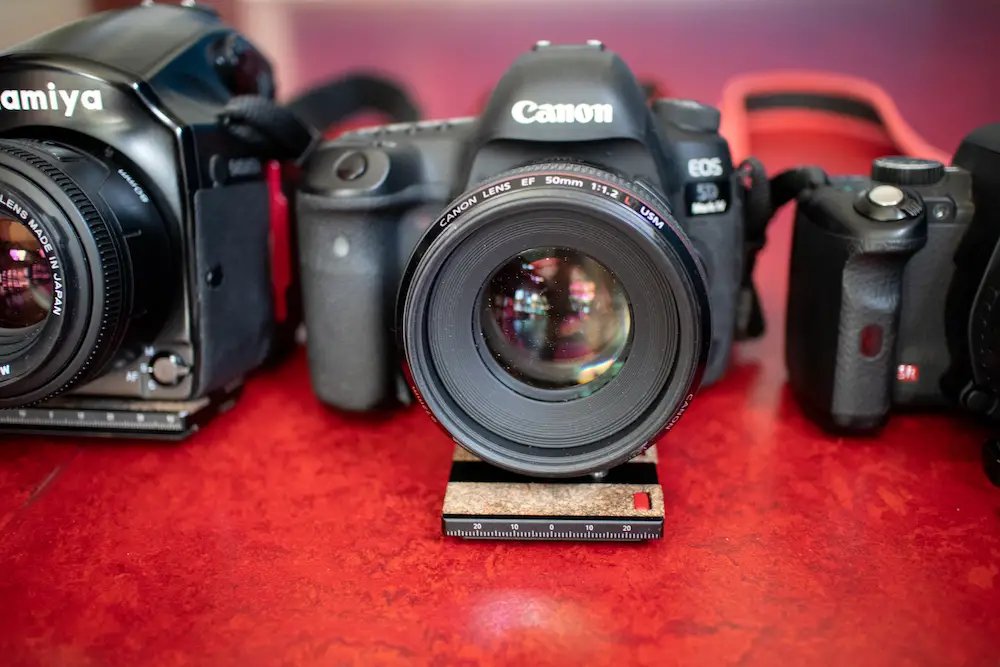

We marked the tripod positions on the floor, wrote down the settings on a sheet and with the help of my brother we could make the project happen. Because of the wet plate process we had a tight schedule so as to not let the plate dry.
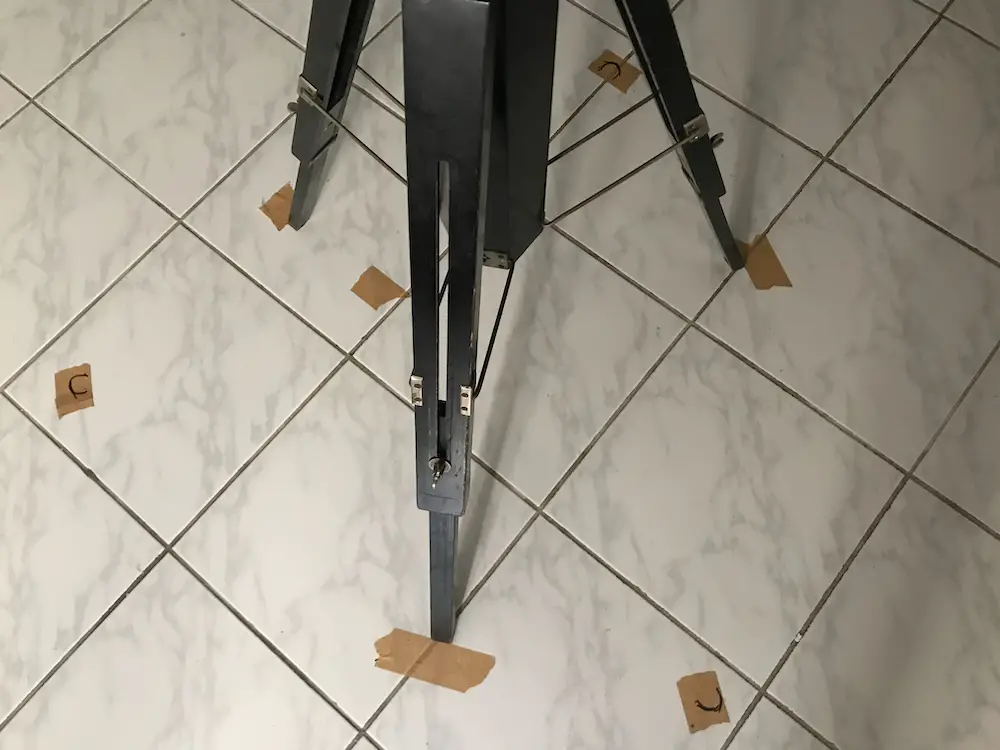
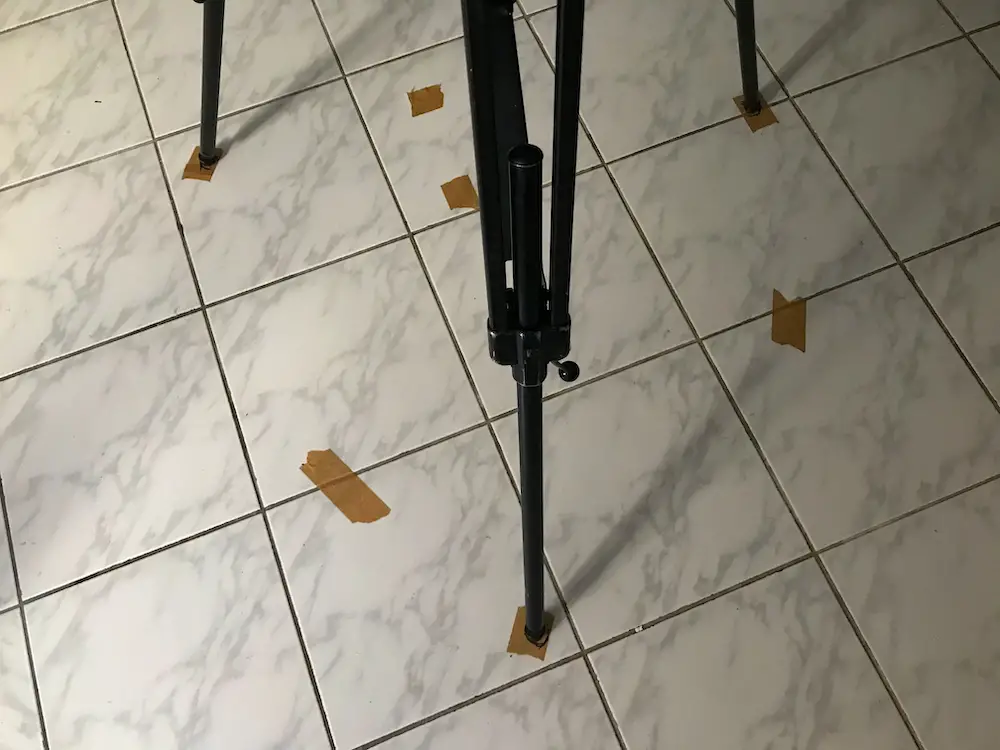
I made some comparison images to see how the image looks like in different light spectrums.
Wet Plate / Digital Infrared
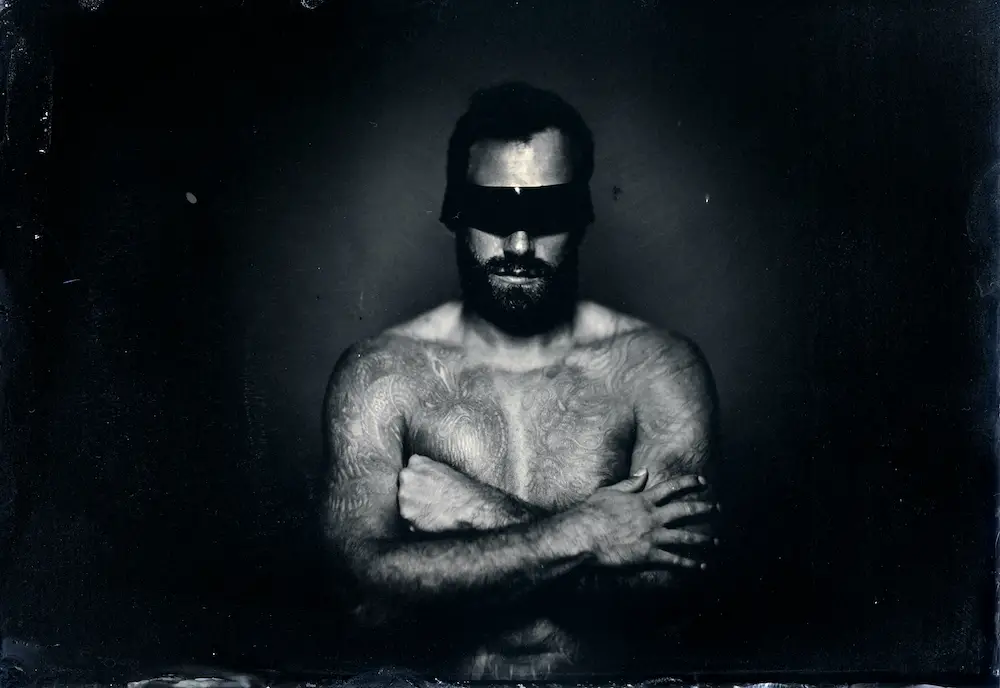
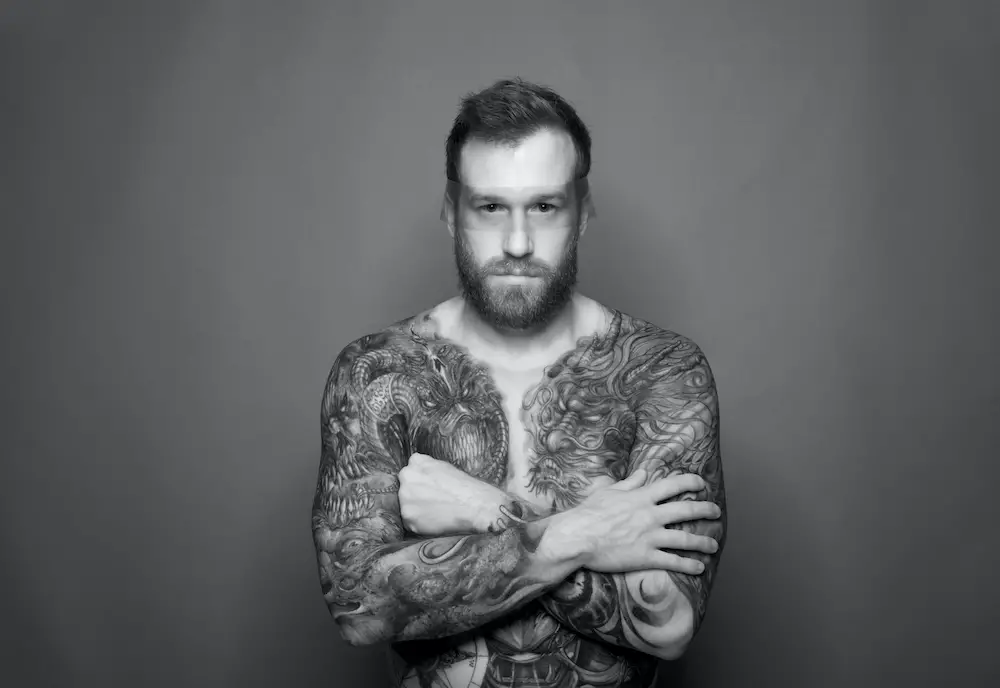
Digital / Wet Plate
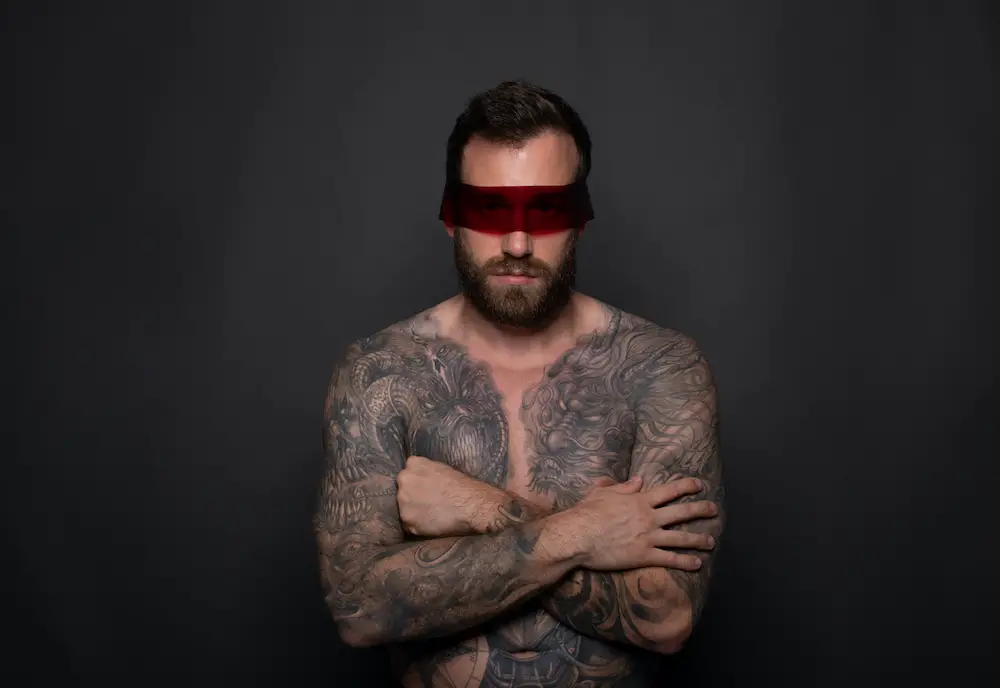

Digital / Digital Infrared


Rollei Ortho 25/ Rollei Infrared 400
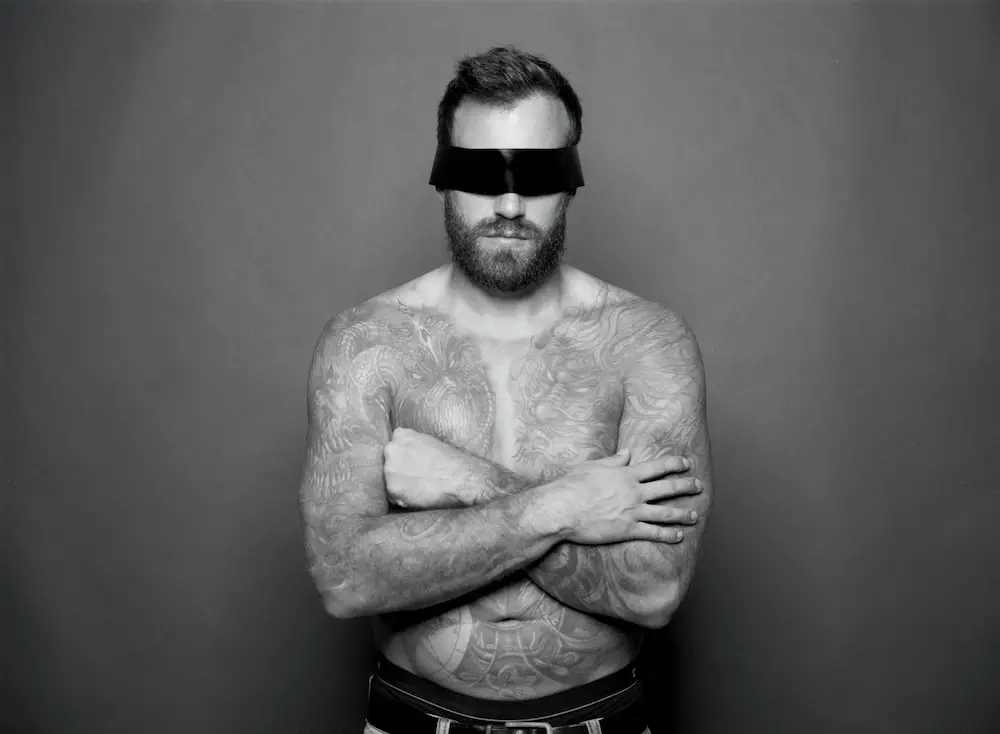
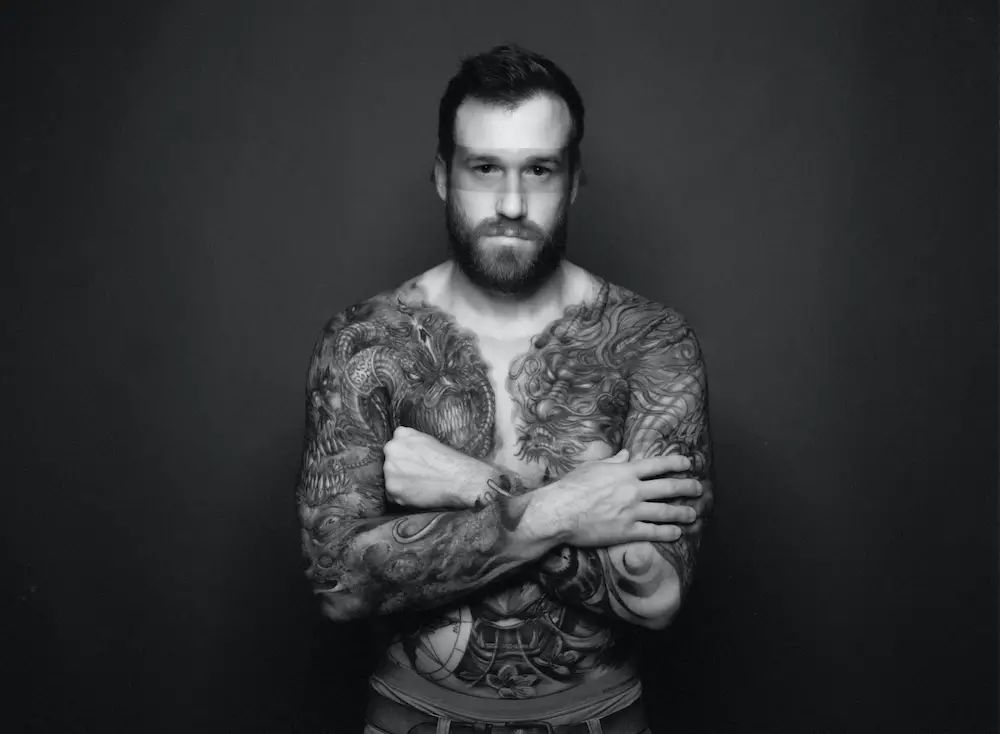
I think it is interesting to see that the Ortho 25 looks totally different compared to the wet plate collodion process while the analog infrared looks very similar to the digital version.
Feel free to contact me on any of my socials or website for questions or if you would like to experience the wet plate process during a workshop or a portrait session
http://www.markus-hofstaetter.at
http://blog.markus-hofstaetter.at
https://www.instagram.com/mhaustria/
http://youtube.com/mhaustria
http://facebook.com/mhaustria
https://www.patreon.com/mhaustria
Share this post:








Comments
An exercise in Infrared photography – PCCGB on My Journey to Infrared Photography – By Markus Hofstätter
Comment posted: 08/11/2020
ºColor-Solinarº on My Journey to Infrared Photography – By Markus Hofstätter
Comment posted: 08/11/2020
Comment posted: 08/11/2020
Huss on My Journey to Infrared Photography – By Markus Hofstätter
Comment posted: 08/11/2020
Comment posted: 08/11/2020